Buzz monitoring is an essential Digital Marketing and Digital Public Relations skill. It is the digital equivalent of research, focus groups and surveys. Digital listening includes information that was previously unavailable to a marketing communications professional, including online forums, social media conversations, pictures, blogging, audio and video. Its digital nature means that you need a new approach and awareness of not only what can be monitored but how to turn that data into actionable information.
Ackura BuzzMonitor
With a professional buzz monitoring platform like KMP Digitata’s Ackura Buzz Monitor, you can monitor the social Web and find your brand mentioned on millions of blog posts, viral videos, reviews, audiocasts, photos, Twitter updates. You can undertake real-time monitoring of mentions of your organisation, product, issues and competitors.
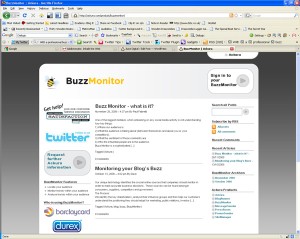
Ackura Buzz Monitor homepage
You can analyse buzz about outcomes of specific marketing campaigns and social media investments. You can be aware of which content is making an impact, what needs to be managed and uncover key influencers online by topic, based on user-determined weightings.
The process of listening, watching, analysing, deciding and engaging is complex at first but that’s what agencies like Juice are for. If you want to make a start in a more modest way or for a smaller business, this post contains a list of useful buzz monitoring tools, some free and many with fee levels.
Key Conversation Indicators (KCI)
Similar to Key Performance Indicators (KPIs), KCIs establish social marketing metrics for brands and/or social campaigns to measure online buzz, as well as gauge a social programme’s success.
KCIs can measure social engagement, sentiment and opinion, as well as specific consumer actions. Although the metrics measured are different for every brand, some of the items you might consider measuring are:
- Conversation volume
- Sentiment
- Topics of conversation
- Ratings
- Favouriting
- Friends and followers
- Passalongs
Establishing the criteria you want to measure and track will help frame the direction of your research and social media strategy.
Free listening and monitoring tools
Google Alerts
Google Alerts is the mother of all monitoring tools. You can target keywords that are important to your brand and receive streaming or batched reports — choose your own flavour.
Technorati
The original blog search engine, Technorati, has been helping bloggers and blog users stay informed for years.
Trendrr
Trendrr from digital agency Wiredset uses comparison graphing to show relationships and discover trends in real time. Use the free account or open an Enterprise level account for more functionality.
Lexicon
Lexicon is a native tool to follow language trends across Facebook by looking at the usage of words and phrases on profile, group and event Walls. For example, you can enter “love, hate” (without quotations) to compare the usage of these two words on Facebook Walls. You may enter up to five terms, where each term can be a word or two-word phrase consisting of letters and numbers.
Monitter
What are people talking about on Twitter? Beyond the integrated search facilities of Twitter apps like Twhirl and TweetDeck, Monitter provides real-time monitoring of the Twittersphere And can also track trends and add widgets
Tweetburner
In the world of Twitter, URL-shortening is a vital tool. Tweetburner also lets you track the clicks on those shortened links, giving you some hard numbers.
Twendz
twendz is a Twitter-mining Web application that utilizes the power of Twitter Search, highlighting conversation themes and sentiment of the tweets that talk about topics you are interested in. As the conversation changes, so does twendz by evaluating up to 70 tweets at a time. When new tweets are posted, they are dynamically updated, minute-by-minute.
Addict-o-matic
Allows you to create a custom-made page to display search results across a number of search and social media platforms. Addicting!
Bloglines
A web-based personal news aggregator that can be used in place of a desktop client.
Blogpulse
A blog search engine that also analyses and reports on daily activity in the blogosphere
BoardTracker
BoardTracker.com is a forum search engine, message-tracking and instant alerts system.
Blogflux
Watches comments/follow-ups on blog posts and similar content such as Flickr or Digg.
FriendFeed Search
Scans all FriendFeed activity. FriendFeed is an important social media aggregator.
HowSociable?
HowSociable provides a simple way for you to begin measuring your brand’s visibility on the social web.
IceRocket
Searches a variety of online services, including Twitter, blogs, videos and MySpace and includes a tool called IceSpy to monitor online subject trends.
Keotag Labs
Keyword searches by bookmark link, generates tags and searches tags by keyword.
MonitorThis
Subscribe to 20 different search engine feeds at the same time. Enter a search term and click the ‘make monitor.opml’ button to get a list of RSS feeds in OPML format.
Samepoint
Samepoint is a conversation search engine that lets you see what people are talking about.
Discover, learn and share new websites and ideas.
Surchur
A Web, blog, image, video, and social media search engine, Surchur has just relaunched their online dashboard. The “dashboard to the now” delivers a well-designed and comprehensive view into the real-time web.
Tinker
Tinker from Glam Media Labs is a simple way to discover what people are Twittering about now.
TweetDeck
Not only a great way to manage your Twitter account, but the keyword search means you can see what people are saying about you. You can also monitor Facebook status updates. TweetDeck is an Adobe AIR desktop Twitter application. Like other Twitter applications it interfaces with the Twitter API to allow users to send and receive tweets and view profiles. According to TwitStat, it is the most popular Twitter desktop application.
Twitter Search
Twitter’s own search tool is a great resource. There is an undeniable need to search, filter, and otherwise interact with the volumes of news and information being transmitted to Twitter every second. Twitter Search helps you filter all the real-time information coursing through their service.
UberVU
Track conversations across nearly all social media platforms and reply to them from one place.
wikiAlarm
A monitoring service to send email alerts when selected articles are edited on Wikipedia.
Yahoo! Sideline
A TweetDeck-esque tool from Yahoo! installed on your desktop. Sideline is an Adobe® AIR™ desktop application built with the Yahoo! User Interface Library (YUI). It allows users to create and group custom queries by topics of interest for the Twitter public timeline.
SocialMention
Think Google Alerts but for social media. Receive daily email alerts of a developing news story, a competitor, or the latest on a celebrity.
Professional applications
Meltwater Buzz
Meltwater Buzz allows you to monitor blogs, social networks, Twitter, forums and other social media sites to get a complete picture of what is being said about your organization, your products, and your competitors. It contains an automated sentiment monitoring tool.
TruCast
TruCast provides keyword-based monitoring of the social Web with an emphasis on blogs and forums. Its dashboard applications provide visual representations of sentiment and trends for your brands online.
Radian6
Radian6 pulls information from the social Web and analyses and provides consumer sentiment ratings for your brand. Radian6 is focused on building the complete monitoring and analysis solution for PR and advertising professionals so they can be experts in social media. It now has some automated sentiment monitoring tools.
Ackura BuzzMonitor
Identifies the crucial online sources that companies should monitor in order to make accurate business decisions. These sources can be found amongst consumers, suppliers, competitors and government. It is a complete service for larger marketing departments to help them make sense of the social media landscape and maximise its opportunities.
Techrigy
Techrigy’s SM2 is a software solution designed specifically for PR and marketing agencies to monitor and measure social media. As businesses and consumers increasingly utilise and rely on social media, agencies need the tools and expertise to stay competitive.
Collective Intellect
Collective Intellect (CI) is a real-time intelligence platform, based on advanced artificial intelligence. Its solution provides automatic categorisation of conversations based on CI’s proprietary filtering technology. According to CI, its technologies provide credible groupings and reduce the “noise” seen in other keyword-based searches.
BuzzDing!
Uses a keyword approach and returns news, blogs, images, video, and social network activity about a brand, a brand’s competition or a product. Useful options include filters, facilities to organise material into projects, to flag items and to add notes. Prices range from Personal @$14 pcm (one project; one user; three phrases) to Max @$199 pcm (unlimited projects; 35 users; 175 phrases).
Filtrbox
Offers real-time monitoring and alerting across mainstream news, blogs, Twitter, FriendFeed and others. With collaborative features, daily email digests and trend analysis, it’s competitive with other offerings. Free trial version as well. Unlimited filters, real-time alerts, particularly strong on Twitter monitoring, continuous updates, trending, reporting, data export.
Heartbeat
A real-time monitoring and measurement tool for social media conversations, to measure key metrics around buzz and sentiment, engage with key influencers and opinion leaders and to conduct comparisons between competitors and topics.
Dialogix
Dialogix monitors the entire social media spectrum, as well as most newspaper, TV and news websites in the world, with a particular focus on Australian websites. Find every news article, comment, blog post, Tweet, YouTube video, forum post and more with ease and be confident you’re not missing a thing. No limits on data for any of plans and no limits to the amount of users who can access the system. Bronze: unlimited data, unlimited users, $595 per month. Silver: unlimited data, unlimited users, sentiment analysis charts, basic key influencer profiles created without contact details, $1,495 per month. Gold: unlimited data, unlimited users, sentiment analysis charts, key influencers ranked by social authority and database of their contact details, $2,495.
Jodange
Tracking a brand or a product is one thing but turning that tracking into a measure of consumer sentiment about a brand or product is something completely different. For that, Jodange has an algorithm called TOM (Top of Mind), which produces consumer sentiment about your brand or product across the Web with some clever algorithms. £2,500+ per month.


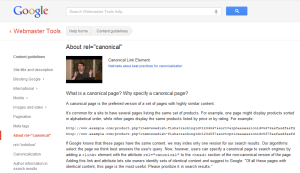












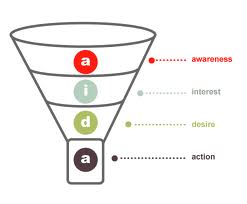


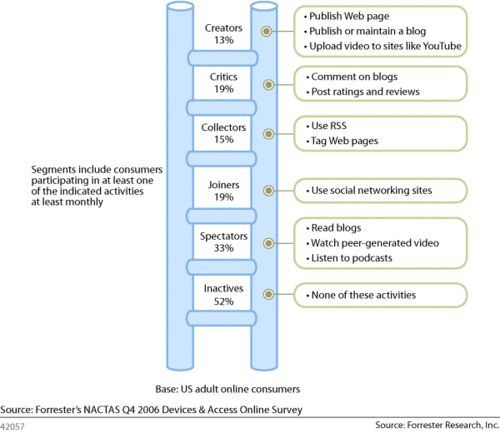





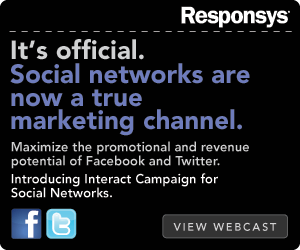






Recent Comments